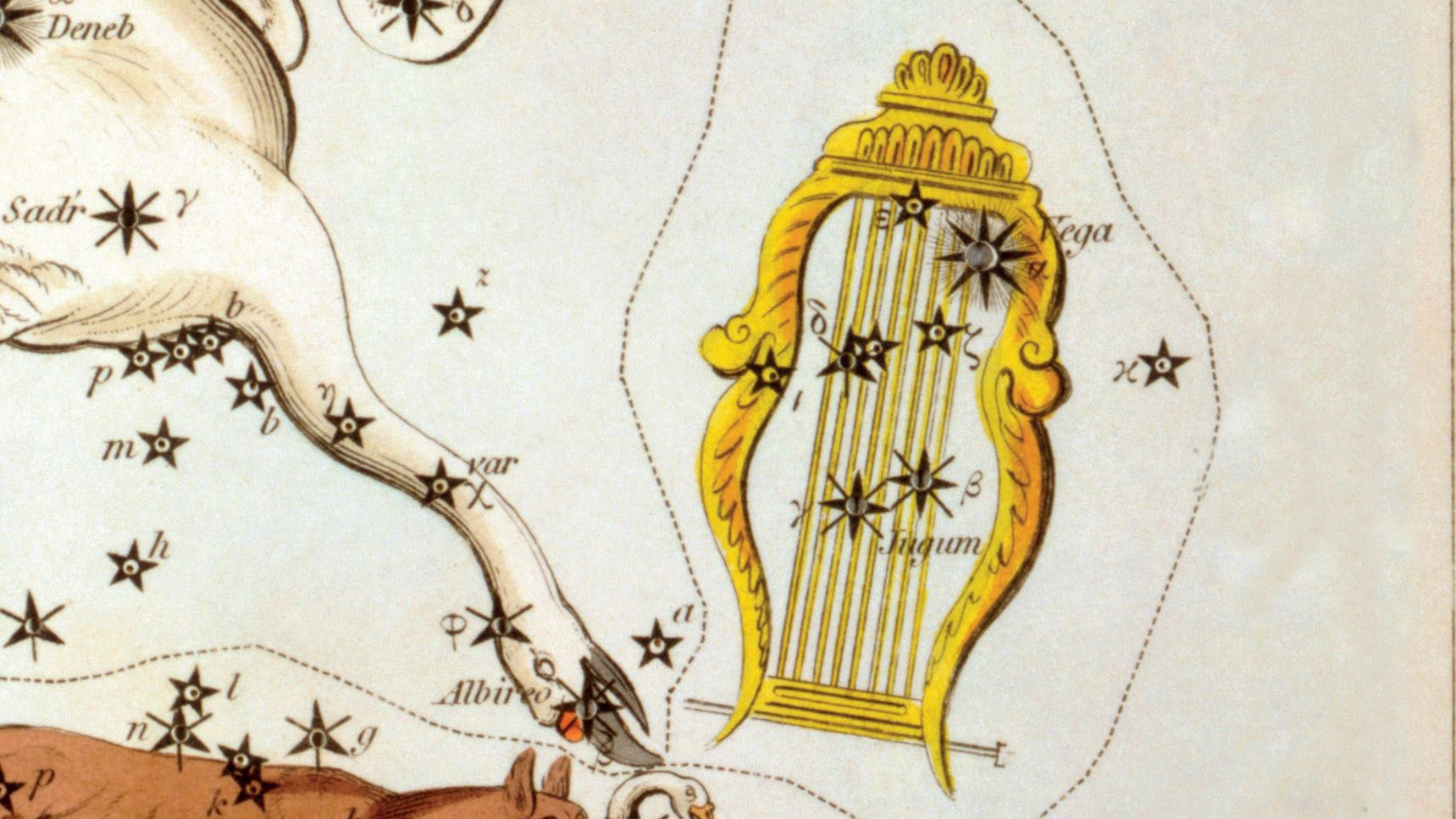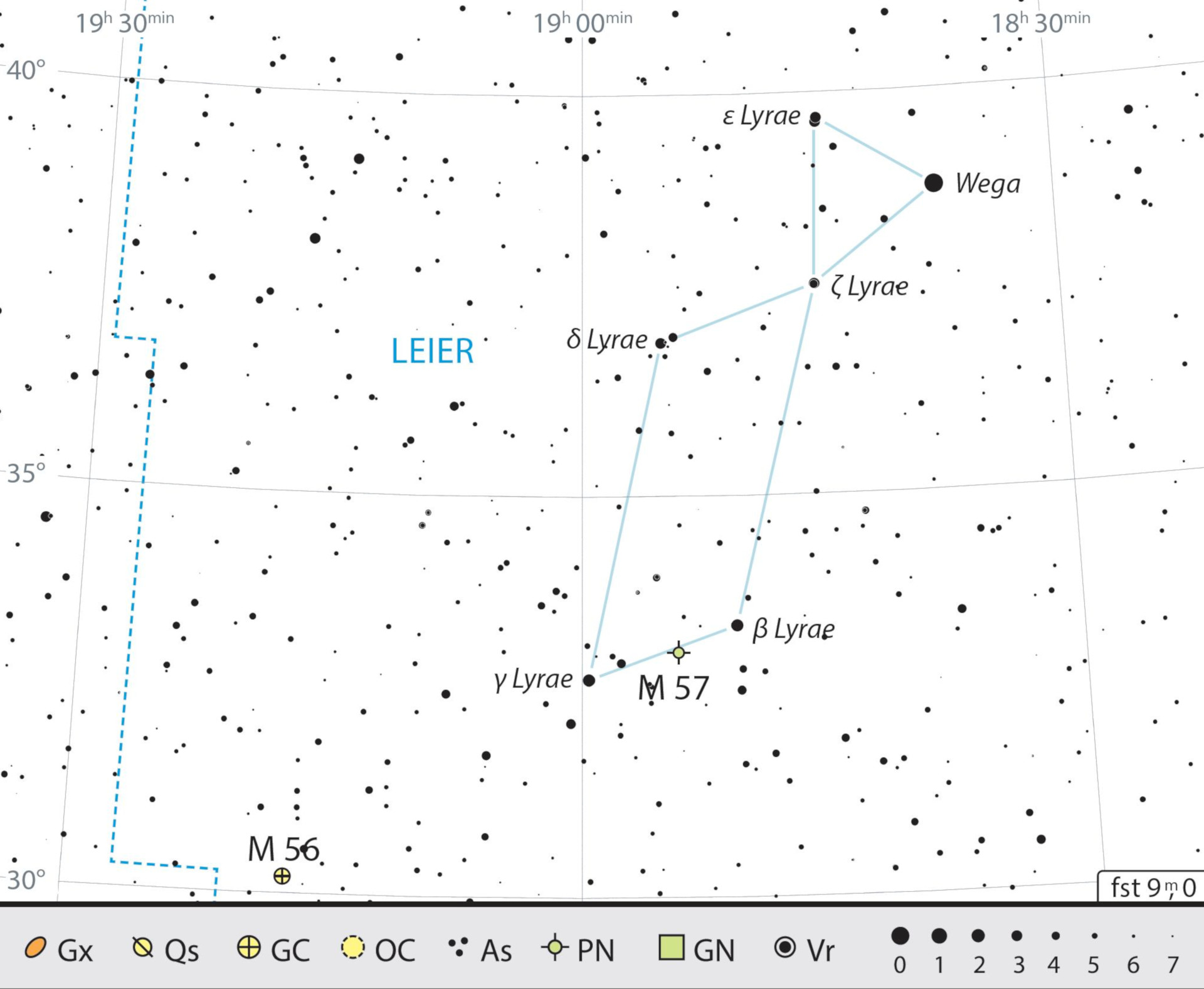Lyra
The small but bright summer constellation is famous for the Ring Nebula M57 and the "Double Double star" Epsilon Lyrae.
 An old representation of the constellation Lyra with its brightest star Vega, one of the corner stars of the summer triangle.
An old representation of the constellation Lyra with its brightest star Vega, one of the corner stars of the summer triangle.Although Lyra is one of the smallest of the 88 constellations, it is nevertheless one of the most distinctive with its striking parallelogram shape, and the brightest star in the summer sky. Lyra’s Vega forms one of the corner stars of the great summer triangle, together with Deneb in Cygnus and Altair in Aquila. As the name of the constellation implies, in ancient times a stringed instrument was visualised in the constellation's rhomboid shape, which was variously a lyre (belonging to Hermes and Orpheus), a harp or a zither. The messenger Hermes used a tortoise shell for the mythical invention of the musical instrument, as recounted in a description of the constellation from around 270 BC.
However, the name Vega has its origins in another constellation motif, which was widespread in ancient times, derived from the Arabic word "al Waki" (the diving one), which referred to a vulture or eagle. The musical instrument is sometimes even depicted together with a bird of prey on old star charts.
Young, wild and healing
When the people of the ancient Babylonian/Assyrian Empire looked at the constellation with bright shining Vega, they saw the shape of a goat (Enzu in Akkadian), which was assigned to the healing goddess Gula. Ancient clay tablets tell how the light of bright stars was an important (divine) ingredient in Assyrian medicinal rituals. For example, a recipe for a horse medicine has been found which describes how a mixture of 23 herbs and aromas should be soaked in beer, "placed under the goat star over night" and cooked in the morning and finished with honey.
The star system, which is just 25 light years away, can be found today in the great science fiction film Contact (based on Carl Sagan's novel), in which an artificial radio signal is received from Vega. However, at around 400 million years old, the star is considered, scientifically speaking, to be still far too young for planets with intelligent aliens. This is because the distant solar system is in a period of great upheaval: it is surrounded by accumulations of dust created by vaporizing comets and colliding asteroids, as well as dwarf planets.
Two Messiers and a Double Double
M57, a prime example of a planetary nebula, is Lyra’s deep sky highlight. As a small magnitude 9 star, it can be observed with binoculars, whereas through a small 100-mm telescope you will see a delicate nebular ring. That is why M57, discovered almost 240 years ago, is often simply referred to as the Ring Nebula in Lyra. Even when it was known that the Ring Nebula was made of gas, there were still some in the early 20th century who believed that they were observing the formation of a planetary system. But actually, the nebula marks the end of a sun-like star's life. It is the outer shell of a dying star, which is stimulated to glow by the stellar core remnant – known as a white dwarf – with high-energy UV radiation.
The 12.6 billion-year-old globular cluster M56 is another enticing Messier object. And the double binary star ε Lyr is always worth a visit. Binoculars are sufficient to observe the pair of stars, but only with a telescope and higher magnification can you see that both stars are actual binary stars.
 Outline map of the constellation of Lyra with our observing recommendations. J. Scholten
Outline map of the constellation of Lyra with our observing recommendations. J. ScholtenAuthor: Nico Schmidt / Licence: Oculum-Verlag GmbH
